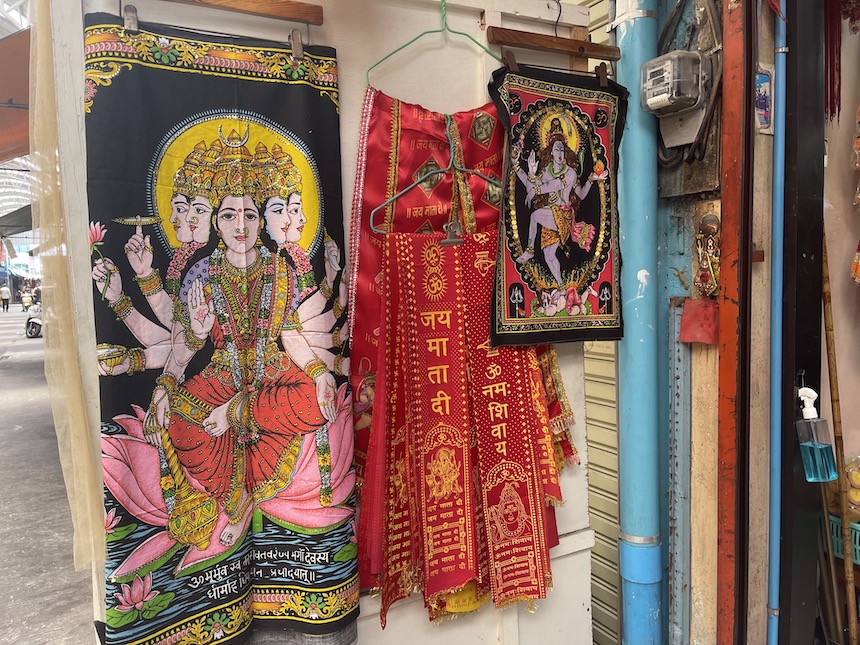Explore Bangkok’s Little India
Most people who come to Bangkok have already visited Chinatown. Others have at least heard of Chinatown. It is somehow obvious that there must be a Chinese neighbourhood in the Thai capital. After all, there have been many immigrants of Chinese descent for hundreds of years.

The fact is that a variety of cultures have migrated to Bangkok and integrated into the Thai population over generations. Obvious examples include immigrants from neighbouring regions such as Laos and Cambodia, as well as Myanmar and even Vietnam, but there are also a number of migrants from the Middle East and India.
Phahurat or Pahurat, often referred to as Little India, is a neighbourhood that sprawls along Phahurat Road in Bangkok. Today it is home to a Thai-Indian community, especially the Sikh community. Phahurat is known for its textile shops.

Pahurat Road was built in 1898 and named after Somdet Chaofah Pahurat Maneemai, the son of King Rama V. The Indians moved into this area soon after the road was built, which soon developed into an Indian community.
The Chinese as well as the Indian way of life have greatly influenced Thai culture. In certain areas of the city, this influence can be seen most clearly. This brings us to Bangkok’s “Little India”, also known as “Phahurat Market”. “Little India” is not far from the famous Chinatown.
Bangkok’s Little India isn’t a typical tourist hotspot; instead, it’s a lively neighborhood where local culture is alive and thriving. The main attraction of Bangkok’s Little India is the bustling Sampeng market. A reasonably manageable network of back alleys where locals sell fabrics, textiles, gifts and accessories. But the market isn’t the only reason Little India might be the place for you.
The Little India region lies in an area of Bangkok that is largely considered part of the “Old City” and is not too far from the banks of the Chao Phraya. The term “small” is also quite apt, as it is by no means a huge area, but rather a main street and a series of alleys.
So if you’re on your way to Chinatown, you can easily stop off at Phahurat Market in Bangkok to experience even more cultural diversity.
Phahurat Market or Little India cannot be compared to the neighboring Chinatown, where one can easily get lost in the maze of streets that all look the same.
If you’re curious about the different sides of Bangkok, it’s definitely worth a visit.

Bangkok’s Little India is known for its wide range of textiles, silk, cotton, wool and cashmere along Pahurat Road, Triphet Road and Chakraphet Road. It is impossible to miss the many silk and textile shops, considered the best by local Thais. Most Thai-Chinese tailors come here to buy fabrics. In addition to textiles, the shops also offer a large selection of statues and images of Indian deities.
Although Little India is predominantly inhabited by Indians, especially Sikhs, there are also a few Thai shops. The sounds of fluent Thai, Punjabi and other Indian dialects create a harmonious cultural mix. Hindi music plays in the back alleys and the spicy smell of Indian food fills the air.
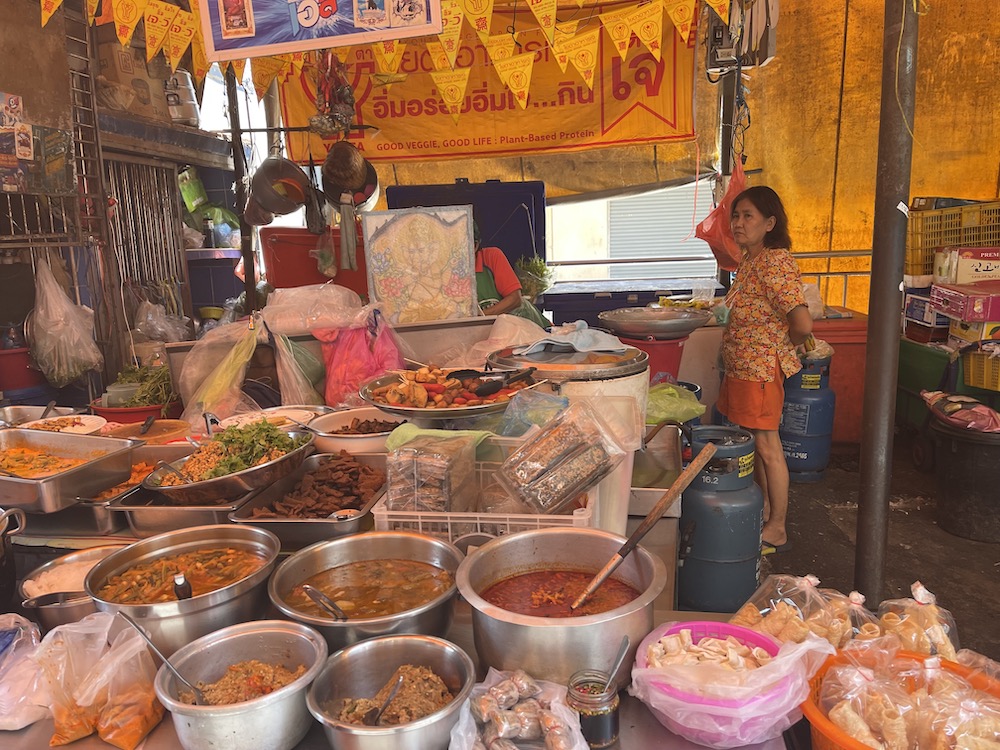
But there is even more to see in Little India:
The Siri Guru Singh Sabha Temple. A six-story white building with a beautiful golden dome, the symbol of Pahurat. It is known as one of the largest Sikh temples outside India. We will report on this in more detail later.
How do you get there?
It is relatively easy to get to Phahurat. A taxi will take you there without any problems. If you live near the Old Town, or better yet in Chinatown, you might even be able to walk. Little India is just 10 minutes from the Express Boat Pier at Pak Khlong Talat Flower Market.
The nearest MRT station is Hua Lamphong, which takes about 10 minutes by taxi depending on traffic.
The address for the taxi driver is Little India Bangkok, Phahurat Road, Phra Nakhon, Bangkok 10200
Dining in Little India
The promise of authentic Indian food is another reason to visit this area.
Indian food is generally not cheap in Bangkok. International prices are charged, especially in the restaurants in the city center that are aimed at tourists. You can also find some curry restaurants on Phahurat Road that boast authentic taste. The prices there are more moderate.
If you are a connoisseur of authentic Indian cuisine, you will probably be impressed. There are many good restaurants and street stalls with large menus and an abundance of Indian desserts and sweets

There are some reputable restaurants that are usually listed in guidebooks for this area. However, sometimes it’s better to just stroll through the area’s winding streets until you find something you like.
Here are some restaurant tips in Little India:
Royal India is an established name in Indian cuisine in Bangkok. It has four different branches in the city, including in the “posh” areas of Phrom Pong and Siam, which presents a bit of a contrast.
Specializing in North Indian cuisine, the restaurant opened in the 1960s and was apparently the first Indian restaurant in Thailand. It is no surprise that it was the first eatery in Phahurat to cater to the burgeoning Indian community. It has now received many awards and been featured in a variety of magazines.
There’s a distinct local feel to Toney’s Restaurant, which specializes in relatively inexpensive Indian-Nepalese cuisine, and is certainly cheaper than the Royal India Restaurant. The menu features a range of curries and other dishes served with rice or fresh roti.
Located on Chakphet Road, on a small street opposite the San Chao Mae Tub Tim Chinese Temple, the restaurant is essentially a street stall with a footpath along a canal.
The clientele consists mainly of Indian men. However, service is in English and the menu features classics like chicken masala, aloo gobi and matar paneer.
You can even watch the roti being stretched and fried by hand before it’s served, and to finish it off, enjoy a warm cup of masala chai tea!
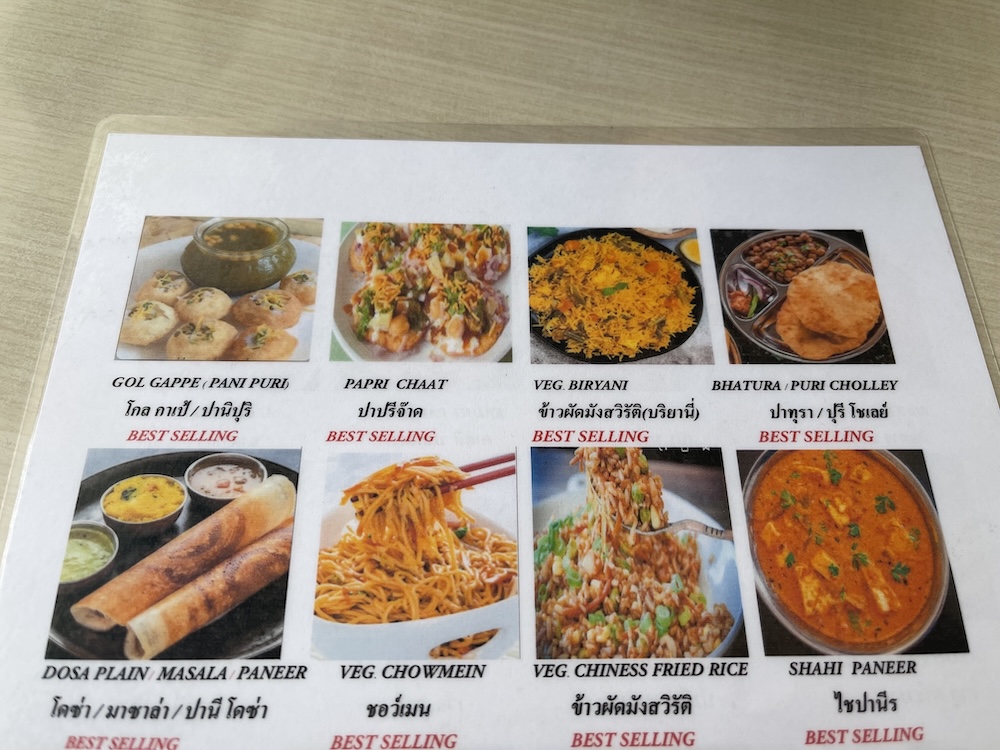
The Punjab Sweet Vegetarian Restaurant is a vegetarian South Indian restaurant and is always busy with members of the local Indian community coming here for delicious crispy pani poori (crispy mussels with potatoes and onions) and many other delicacies. The restaurant on the first floor is simply furnished, but the menu caters to all taste buds of Indian cuisine. The “sweet department” is on the ground floor. If you still feel like it, you can buy sweet treats at the counter and take them with you.
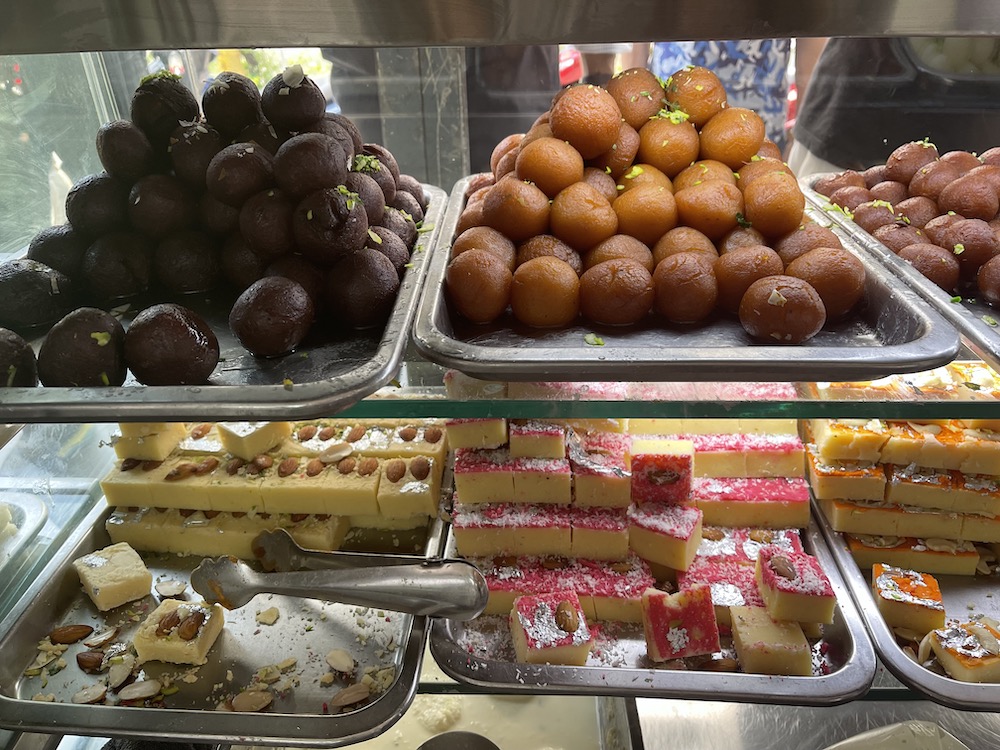
Gurdwara Siri Guru Singh Sabha Sikh Temple
If there is one symbol of Little India, it is the Sikh Temple.
The six-story Sikh Temple, a white building with gold trim and a glittering gold dome, is located in the heart of the community. The temple was built in 1932 and is considered one of the largest Sikh temples outside India.
It is really difficult to miss this Indian landmark. The temple is definitely worth a visit. If you make it to the top of the six-story temple, you’ll have impressive views of Phahurat and Yaowarat. Don’t worry, there is an elevator.
This structure has a certain historical and cultural value.
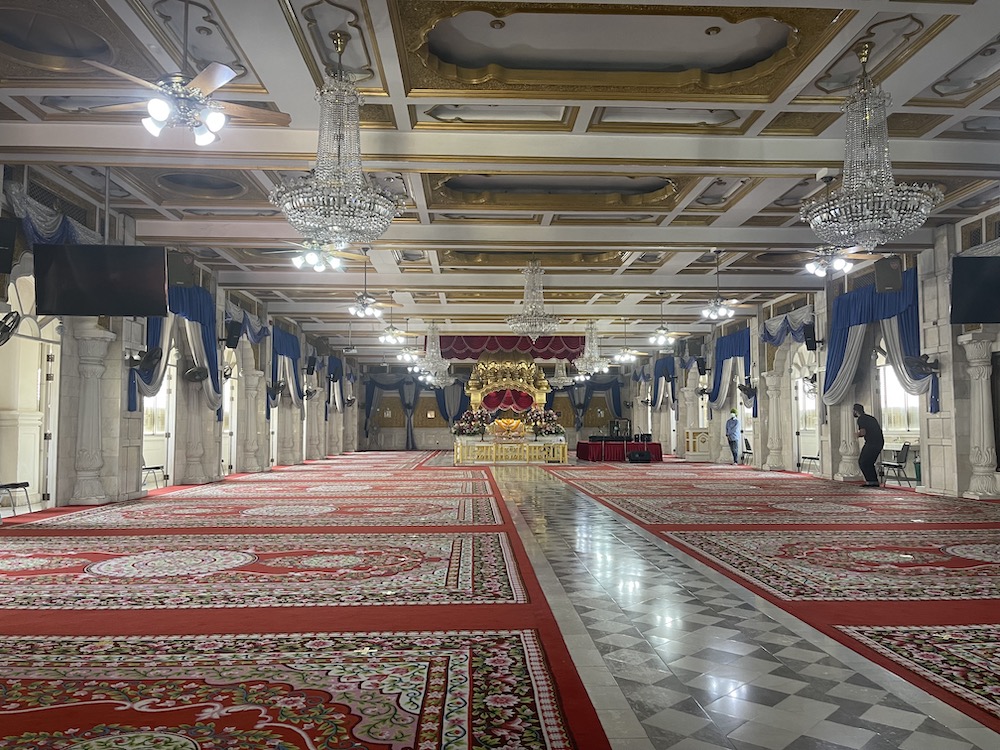
By 1911, many Sikh families had settled in Thailand. Bangkok was indeed the center of immigrant Sikhs. During this period there was no gurdwara, so religious prayers were held alternately in Sikh homes every Sunday. The population of the Sikh community was increasing, so in 1912 the Sikhs decided to build a gurdwara. A wooden house was rented near Baan Moh, a well-known business district. These rooms were prepared so that prayers could begin in this new place of worship.
However, due to certain inconveniences, the prayers and other religious duties could only be held once a week. In 1913, as the Sikh community in Bangkok continued to grow, a new, larger wooden house on the corner of Phahurat Road was taken on a long-term lease. After extensive renovation and decoration work, the Guru Granth Sahib was installed and religious prayers were performed daily.
Later in 1932, the Sikh community raised money and purchased a plot of land. The new permanent Gurdwara was completed in 1933 and was named Gurdwara Siri Guru Singh Sabha. Construction took about five and a half months. Once completed, this Gurdwara became the center for all Sikh followers and Thais of this religious community.
The construction is said to have cost 100 million baht (around 1.9 million euros). In fact, this marble building with its golden dome is so simple and elegant that this price might well be right.
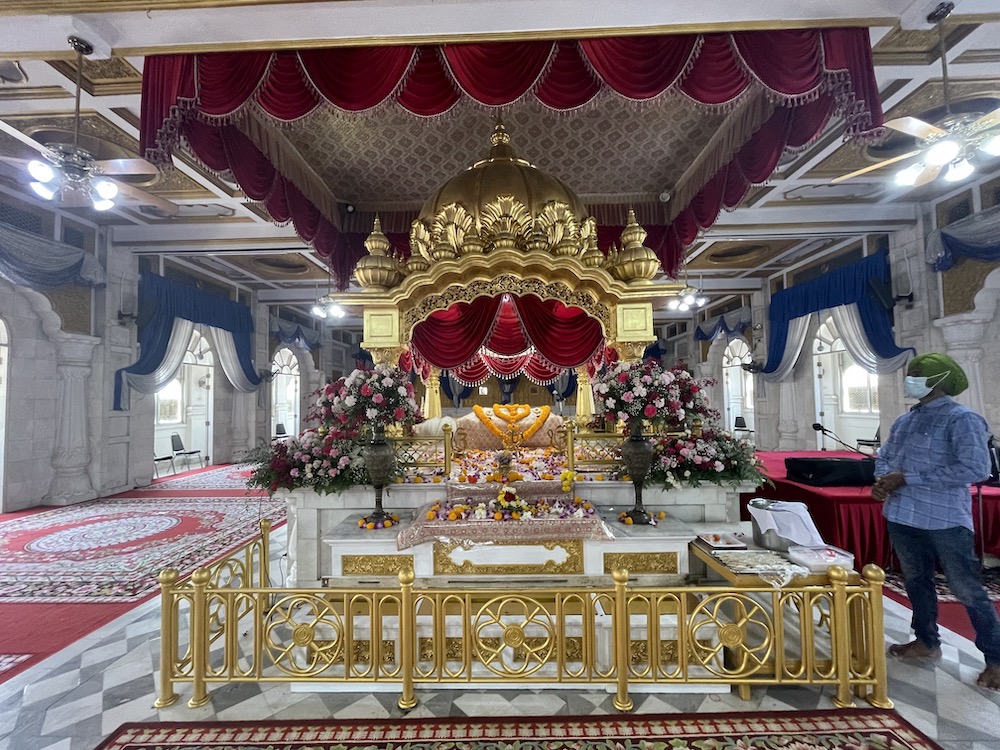
As in all Sikh temples in the world, this one also offers free food. Non-Sikhs can also sit down here and eat together or take a “food package” with them.
Today there are around 25 million followers of Sikhism, as this religion is officially called, worldwide. The majority live in India.
https://de.wikipedia.org/wiki/Sikhismus
Visiting an unfamiliar place of worship can sometimes be a little intimidating. Don’t have any inhibitions. The Sikh followers are extremely friendly, helpful and happy to share information.
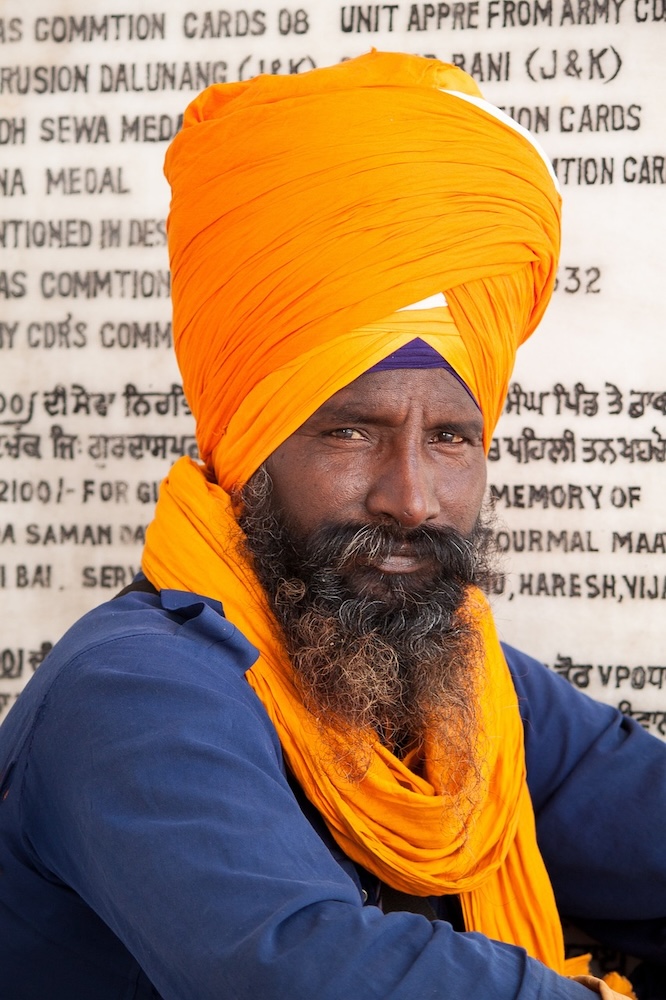
Here are a few tips for visiting a gurdwara respectfully
- You can enter the temple without a guide.
- All visitors are required to cover their heads with a headscarf or scarf before entering the building. If you don’t have one, the staff on site will provide you with an orange cloth to cover your head, which is given to both men and women.
- Visitors should remove their shoes and wash their hands before entering the prayer hall.
https://de.wikipedia.org/wiki/Gurdwara
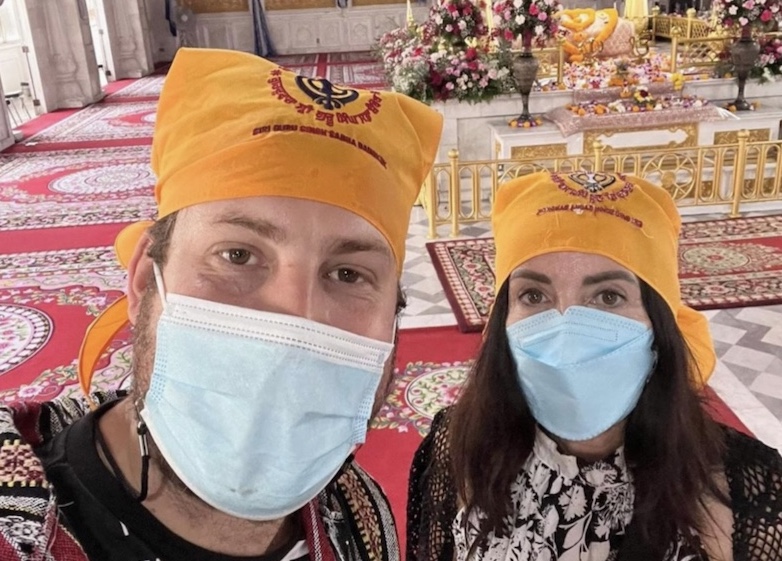
The atmosphere of the temple as well as the enormous openness and friendliness of the Sikh community touched us deeply.
Why do Indians eat paan after lunch?
Paan has been a part of Indian tradition and hospitality for centuries. Paan is known to aid digestion and refresh the mouth. Many Indians offer it to their guests after meals. In Little India we spotted a man at a small table making this digestive snack upon request.
But what is it exactly? A Refresher, Digestive, Symbol of Hospitality – All of this is Paan! Indian paan is popular throughout Southeast Asia, from India to Thailand to the Philippines to Vietnam. But it is not actually food, even if it is consumed. Paan is made from betel leaves and consumed with various fillings.
Paan, also known as pan, is an Indian delicacy that is often eaten after a meal. It consists of betel leaves stuffed with chopped betel nut and slaked lime. Further, various other ingredients including red katha paste can be added. Paan is served folded or rolled into a triangle and spit out or swallowed after chewing. Paan dates back to ancient times and originated in India before becoming popular in other Asian countries. Although it is sometimes used as a palate cleanser and digestive aid, paan often acts like a caffeine-like stimulant and is addictive. It can cause tooth and gum decay, and the areca nut has been linked to certain types of cancer.
Paan was once considered a symbol of Indian royalty. The custom of chewing it goes back more than 2,500 years. The skillful paan maker is known as Paanwala or Paan Walah in North India.
Whatever you call them, paan makers often stand on street corners offering paan recipes. They serve fillings that can range from candied fruit to raisins to mukhwas, cardamom, saffron, toasted coconut, areca nut, slaked lime paste and even edible silver leaf. The idea behind it is somewhat similar to chewing tobacco and has its roots throughout Southeast Asia.
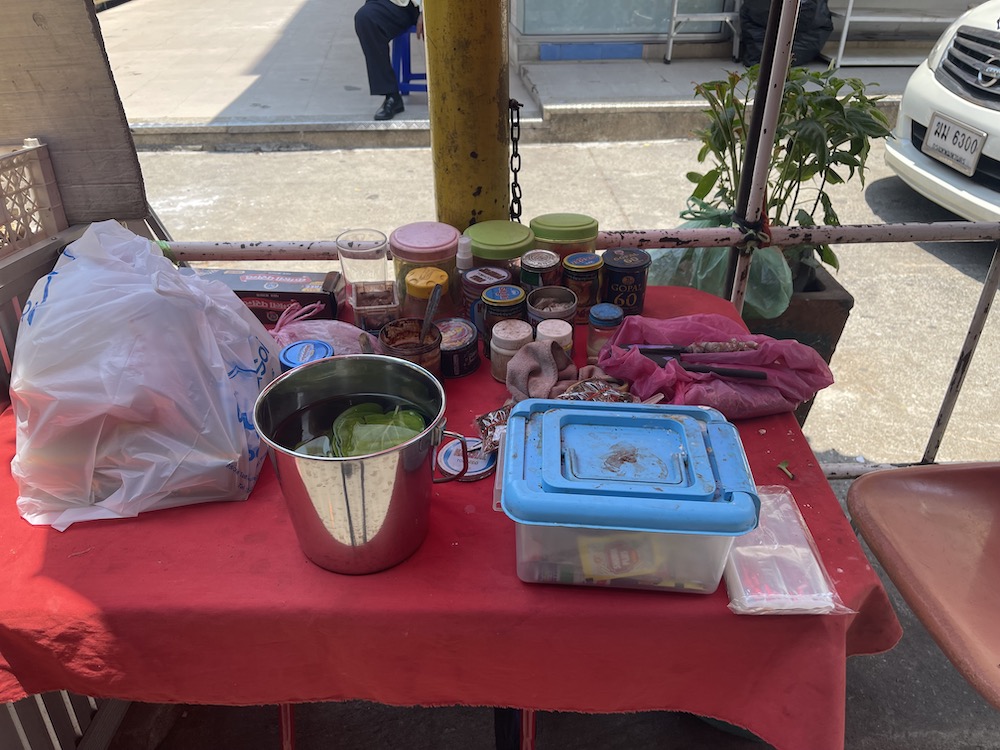
What are the benefits of chewing paan?
Betel leaves are rich in riboflavin, vitamin C and calcium. Chewing betel leaves stimulates saliva production, which leads to better digestion and also improves appetite. Its cooling effect helps with headaches. Cloves, fennel and gulkand ensure fresh breath and better oral hygiene.
Gulkand are sugared rose petals used to flavor food or along with betel leaves to freshen the mouth.
Why do you chew paan?
Betel chewing is considered a recreational and intoxicant. To honor a guest, morsels of betel were offered as a token of honor, a symbol or gesture that represents respect, admiration or appreciation.
Paan contains many flavors and has a few health benefits too. Most people who chew paan regularly have developed a habit or are addicted to it. Chewing slowly promotes saliva flow and stains the teeth red. Betel chewing can be compared to the consumption of snuff or chewing tobacco, which is more familiar in Europe.
The WHO (World Health Organization) and the International Agency for Research on Cancer (IARC) warn of the increased risk of developing oral cancer.
Many people chew paan and spit it everywhere without thinking about the consequences. Many monuments, roads and public places in India have been destroyed by the red spots.
For this reason, don’t just spit anywhere. If you want to get rid of it, spit into a paper napkin and then throw it in a trash container. Your teeth will be stained red, but don’t worry. After rinsing with water and/or brushing your teeth, you will be rid of the problem.
In the 21st century, paan has become a growing concern for health authorities in India. Spitted residue was considered a public nuisance as users spat the resulting brick-red saliva onto the sidewalks.
A single consumption poses no danger!
Our conclusion
Little India in Bangkok is absolutely worth a visit for anyone wanting to experience a unique side of the city beyond the usual tourist spots. It’s a place where cultures blend beautifully—vibrant colors, rich aromas, and a deep sense of community fill every corner. Wandering through the bustling textile markets, sampling authentic Indian sweets, or simply soaking in the lively atmosphere gives you a true taste of Bangkok’s diversity. Plus, seeing the ornate Sri Guru Singh Sabha Temple adds a peaceful, spiritual layer to the experience. A visit to Little India isn’t just sightseeing; it’s stepping into a world of warmth, flavor, and tradition right in the heart of Bangkok.
